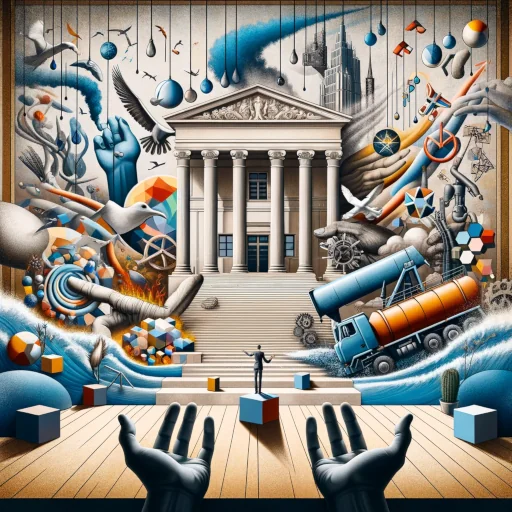The renewed partnership between the British Museum and BP has ignited debates over the ethics of corporate sponsorships in cultural institutions. With increasing societal focus on climate change and environmental responsibility, this alliance faces scrutiny. Critics argue that such sponsorships could compromise the integrity of the arts, linking them with companies known for environmental controversies, as highlighted by BP’s involvement in significant environmental incidents like the Deepwater Horizon oil spill. Here I delve into the complex interplay between cultural patronage and corporate responsibility in today’s art world.
The Concerns
The concerns relate to potential conflicts of interest affecting the British Museum’s storytelling and educational role. Financial ties to BP could pressure the museum to portray certain narratives more favorably or omit uncomfortable truths about environmental damage and historical exploitation linked to BP.1 This situation might compromise the museum’s commitment to unbiased education and historical accuracy, raising ethical questions about the influence of corporate sponsorship on cultural and educational institutions.
There is substantial evidence of environmental damage linked to BP, particularly highlighted by the Deepwater Horizon oil spill in the Gulf of Mexico.2 This incident has been documented as one of the worst environmental disasters in U.S. history. It resulted in significant harm to marine life, including long-term effects on dolphins, fish, and other sea creatures. The spill’s impact was observed in various forms, such as dolphins suffering from liver disease, lung conditions, and other health issues, a noticeable decrease in marine life in affected areas, and findings of mutated fish in the Gulf. These environmental consequences highlight the serious implications of oil spills and the long-lasting effects they can have on ecosystems.3
The Broader Issue

An abstract representation of the conflict between cultural institutions and corporate sponsorship in the context of environmental ethics
Let’s focus on the broader issue of how corporate sponsorships can influence the narratives and educational content of cultural institutions. The concern is not necessarily about specific actions of BP, but rather about the potential for any corporate sponsor to impact the objectivity and impartiality of a museum’s exhibitions and educational mission.
My Insights
I have found the evolving public and cultural perception of sponsorships between cultural institutions and fossil fuel companies is increasingly critical, especially in the context of growing awareness of climate change and ethical business practices. Many people view such partnerships as problematic, seeing them as a way for companies associated with environmental harm to improve their image without making substantial changes to their practices.
From an artist’s perspective, opinions can vary widely. Some artists I talked to see these sponsorships as necessary for the financial support of cultural institutions and the arts. Others artists I talked to outright criticize them, arguing that they compromise the integrity of cultural institutions and art by associating them with companies that have questionable environmental and ethical records. Artists concerned about environmental issues and social responsibility view these partnerships as unacceptable, believing that art should challenge and reflect on societal issues, including environmental protection and ethics, rather than aligning with those who might be seen as contributing negatively to these issues.
But my viewpoint is art can indeed be environmental, non-environmental, or even neutral. The nature of art is extremely diverse and can encompass a wide range of themes and subjects, from explicitly addressing environmental issues to being completely unrelated to them. Art is a reflection of the artist’s perspective and can serve various purposes: to express, to question, to celebrate, or simply to exist without any specific agenda.
When critics argue that sponsorships might compromise the integrity of cultural institutions, they are often concerned about the potential for such partnerships to implicitly endorse or legitimize the sponsor’s activities, especially if those activities are controversial or seen as ethically or environmentally problematic. This concern is about the perception and messaging that the association with certain sponsors can create, rather than a comment on the nature of the art itself.
Artists and institutions might consider these aspects when deciding on partnerships or sponsorships, balancing the need for support against the potential implications of their associations. The decision often reflects the values and missions of the artists and institutions involved. What say you?
Footnotes






